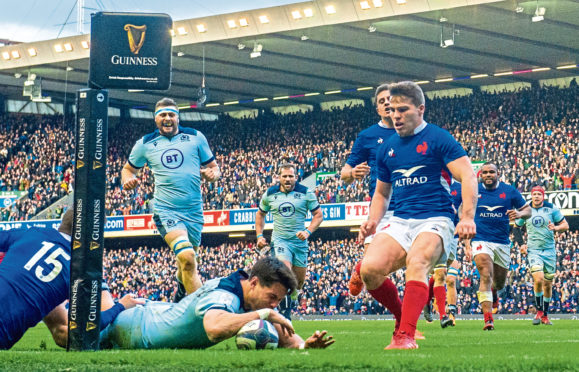Given that we all are apparently doing quizzes from home at the moment using something called Zoom – sorry, not a clue – let’s enter the spirit of that by opening this week with a multiple choice.
There are apparently four ways we can get rugby started again once this current blight has passed. What’s your preference?
No 1 is we cram all that’s left from 2019-20 into a confined space whenever the green light goes to play safe, and then just pile straight on into the 2020-21 season like a close season didn’t exist – a bit like junior football every year.
No 2 is that we have a truncated finish to the 2019-20 competitions, behind closed doors if necessary, with a Top 14 final, a Gallagher Premiership final and a PRO14 final based on current positions, and get creative in finishing the European competitions. Then we plough on into 2020-21 as if nothing has happened.
No 3 is to completely wipe club rugby out until December, and play either an international series encompassing the postponed summer tests going straight into the autumn tests, or if international air travel remains dodgy, play a home and away Six Nations as a grand, exciting and lucrative return to the game.
No 4 is we don’t play rugby until 2021.
That last one is the most depressing, the least appealing in terms of the necessary business of making back some of the money the sport is losing each week at the moment. It’s also, possibly, the most realistic.
No 1 is going to be a non-starter, as the thoughtful and insightful Glasgow coach Dave Rennie flagged up this week.
Dave thinks that a 13-14 month season is going to be dangerous in terms of player welfare, and there are few head coaches in my experience who care about that issue more than Rennie.
We have seen indidvidual players go through something like this; one recalls John Hardie, who played a full Super Rugby season and then came to Scotland and tore into a high-octane international Northern Hemisphere season including a World Cup without a break.
Huw Jones did much the same more recently in 2016-17. Both men ended up broken at the end of it, Jones missing a certain Lions tour at the end of his shift You could argue that neither has been the same player since.
The players have been circumspect about wielding their power with one exception – when the Nations League concept envisaged four more international games a year – most teams average 11 or 12 already – and senior figures Kieran Reid, Jonny Sexton and Alun Wyn Jones stepped up with an unequivocal “you’re not on”. I suspect they’ll say the same to Option 1.
No 2 is certainly the realistic preference of the big clubs in England and France, and with their unquenchable enthusiasm for European Rugby, probably the Irish as well.
It certainly maximises their ailing bank balances while placating sponsors and TV people. But a quick fix end to the season, other than abandoning it entirely, is going to be selective. Again, it’s hard to disagree with Rennie in the case of the PRO14 – Leinster were so far in front, they deserve to win it anyway.
Europe might be a World Cup-style finish with remaining games – we’re at the quarter-finals, remember – being played over three weeks at one venue, perhaps?
But enthusiasm for the European events has always been selective from Top 14 and English Premiership clubs and owners. About three of the Top 14 – Clermont, Toulouse and Toulon until recently – have bothered much with it. One negative result in the pools and they tend to give up the ghost (sadly for Glasgow, La Rochelle didn’t stick to that particular script this season…)
In England too, love for the EPRC events has mostly been about the money and apart from Saracens, little about the actually event. But needs must in this environment, because clubs are acutely aware that the major unions and World Rugby are pushing for Option 3.
And to be honest, so would the general public. International rugby moves the needle first everywhere, attracting huge crowds, media attention and TV money…oh, and unless you had forgot, the 6 Nations TV deal is up for renewal.
Hey Sky, or any other bidders, how do you fancy starting your multi-million contract with the first-ever home-and-away Six Nations played in November and February/March?
We’ve often said here, you mess with the aura of the Six Nations at your peril. But these are unprecedented times, and the old championship is the game’s most assured money-spinner.
What better way to say “we’re back!” than with a festival of the game’s greatest attraction? And while the purpose of this would obviously be to fill rugby’s coffers back up to a healthy state, there should be some left over to share with ailing partners in the Southern Hemisphere or honouring the heroes who have dragged us through this crisis.
It would also mean the elite players being lost to the domestic game for much of the 2020-21 season, and the club owners will hate that.
But rugby will need a grand re-launch and really, only this will suffice.
